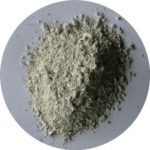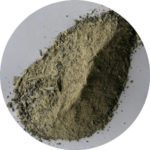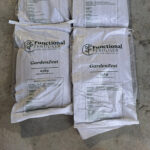Dr. Graham Sparling in his lecture to a packed theatre in 2004 stated, “It’s a sobering thought that our entire high-tech world is ultimately supported by life in the top 20cm of the soil.”
Dr. Sparling, then a leading Landcare Research scientist, went on to say that the soil biological process of denitrification is the only process whereby we can get reactive nitrogen from the soil and water back into benign nitrogen gas.
In essence without a healthy functioning soil civilization as we know it steadily unravels. Human health is only as good as the food we eat and that is dependent on soils functioning as they are designed to do.
The fact that excess nitrogen is entering groundwater is a sign that the filtering effect provided by soil held carbon is compromised and inputs must be reduced if further degradation is to be avoided.
Although there is now a limit of 190kgN/ha/year of synthetic N able to be applied, that alone is unlikely to have a marked effect on the losses to groundwater, particularly in regions with shallow sandy soils.
The answer to the issue is increase the amount of carbon being sequestered and limit the quantity of synthetic N applied.
Carbon is most rapidly sequestered under permanent grazed pasture provided the essential nitrogen component is supplied by the bacteria on the nodules of clover.
Losses of N to groundwater can then be markedly reduced without limiting total farm output.
A key to a healthy functioning soil is its ability to breathe. Air needs to be able to enter freely and gases, primarily CO2 released.
In an ideal state soils contain 25% air and 25% moisture with soil crumb dominating the top 20cm.
Carbon dioxide being heavier than air stays close to the surface of the soil stimulating plant growth, and it is plants continuously in a rapid growth phase that have the greatest requirement.
In order to ensure plants are continuously growing grazing animals are required and their treading pressure rapidly incorporates dung and old root matter effectively and efficiently.
During winter deep pugging during prolonged wet periods is best avoided, although whether it’s best to have a smaller mess over a larger area, or a larger mess in a confined area is debatable.
Blackened soil behind animals grazing crops is not necessarily a concern. When pasture is re-established either by direct drilling or after light cultivation there will be a net gain in soil carbon.
Animal feet necessarily cause soils to compress. A healthy biologically active soil rapidly regains its natural form, and it is only when that doesn’t occur that compaction has occurred.
It’s often been stated that it’s not possible to change soil biology, however research here and overseas shows that not to be a fact.
We know that the addition of lime to soil increases both the activity and number of beneficial earthworms.
Earthworms positively impact physical structures and where they proliferate there is a corresponding lift in the numbers of all other beneficial soil dwellers.
Lime also alters soil pH and a pH of close to 6.2 provides the environment where nutrient is most available for plant uptake.
Golden Bay dolomite is a highly valuable resource, well known to intensive dairy farmers for its unparalleled ability to limit calcium/magnesium related disorders during spring.
Thirty years of experience indicates that unless soils are severely deficient a rate of 200kg/ha delivers outstanding results and it may be applied whenever practicable.
Dolomite is also a well-known soil conditioner markedly improving water infiltration encouraging the recovery of soil damaged during winter.
Applications of 500kg/ha or more calculated from soil tests and based on ‘balancing’ the soil are unlikely to provide a better outcome than 200kg/ha applied annually.
For more information contact Peter on 0800 843 809.




